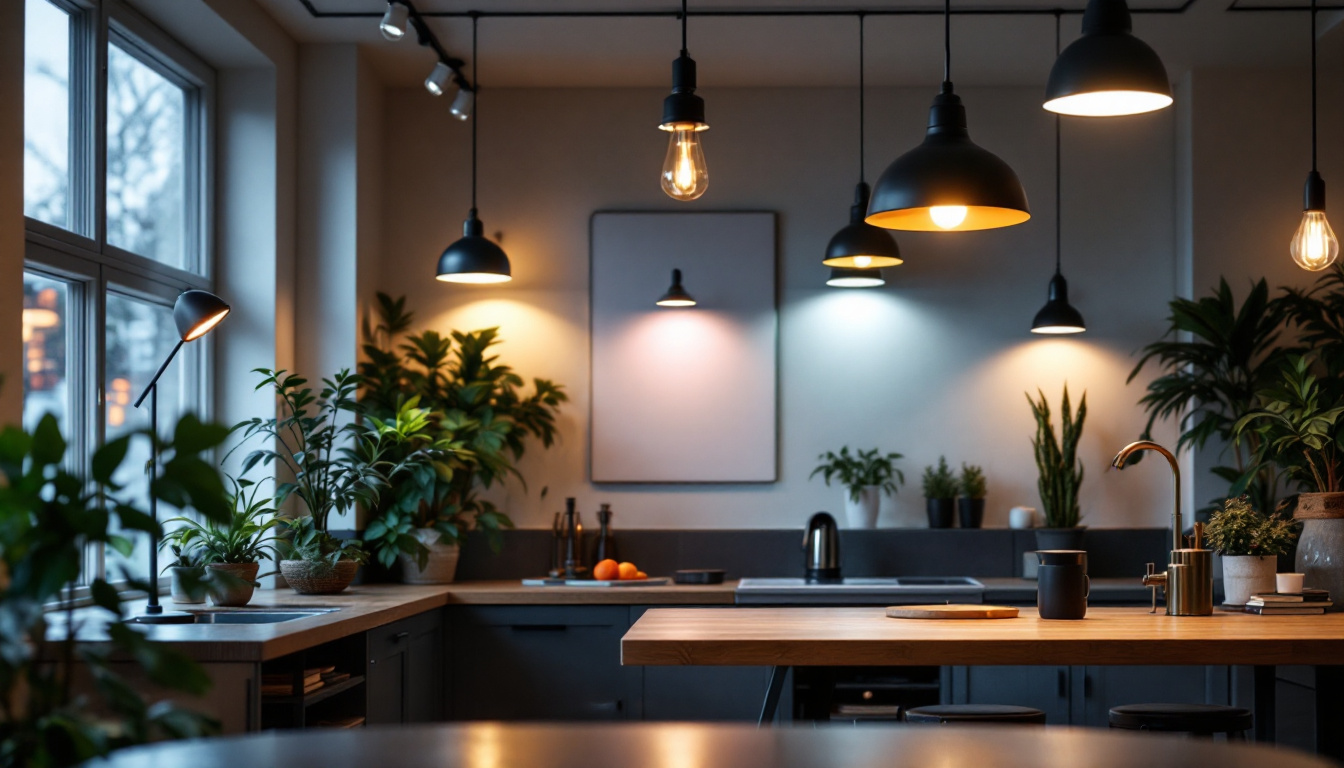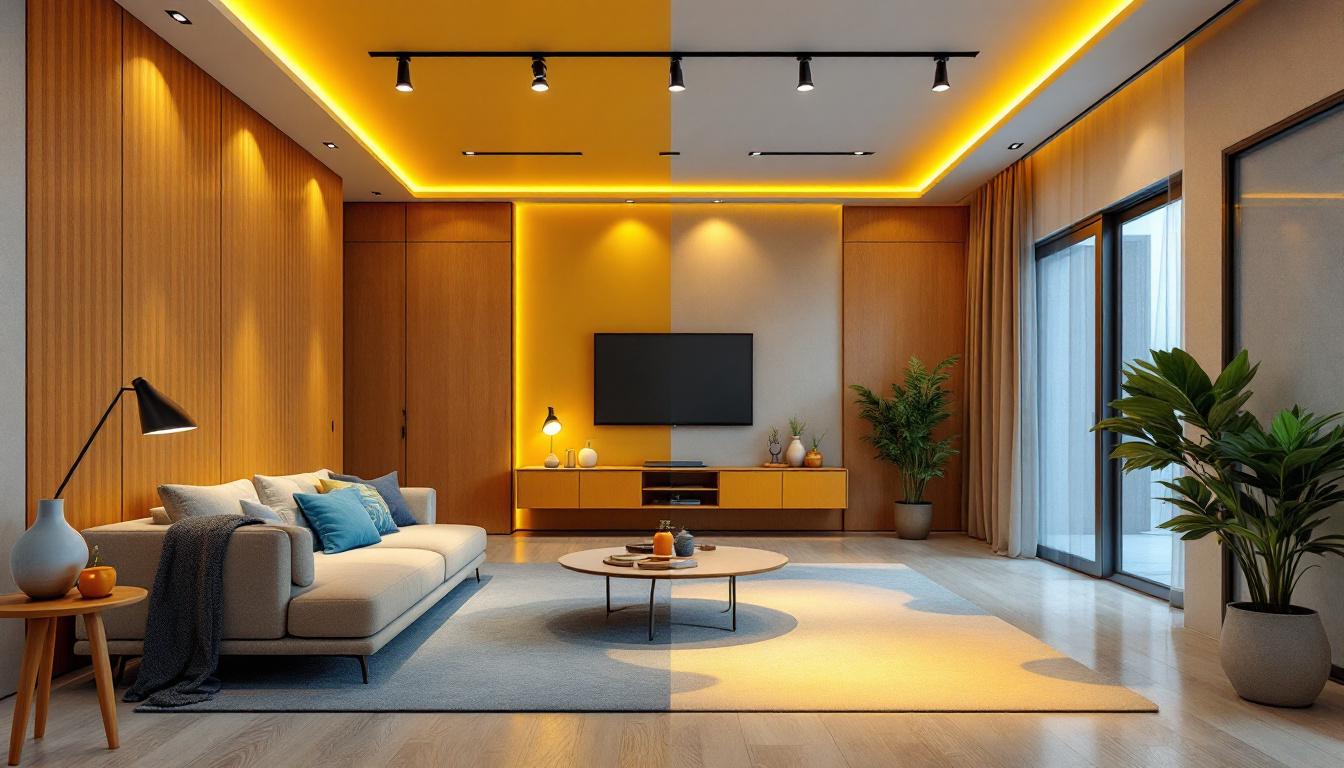
Pendant lighting has become a staple in modern interior design, offering both functionality and aesthetic appeal. For lighting contractors, understanding the nuances of pendant lights can open up new opportunities for projects and enhance client satisfaction. This article explores the various benefits of pendant lighting, how contractors can leverage these advantages, and the trends shaping the industry.
Pendant lights are incredibly versatile, making them suitable for a wide range of applications. From residential homes to commercial spaces, these fixtures can be adapted to fit various styles, sizes, and functionalities. This adaptability is one of the key reasons why lighting contractors should consider incorporating pendant lighting into their offerings.
One of the most appealing aspects of pendant lighting is its design flexibility. Pendant lights come in a myriad of shapes, sizes, and colors, allowing contractors to match the fixtures with the overall design theme of a space. Whether it’s a sleek, modern kitchen or a rustic dining area, there is a pendant light that can enhance the aesthetic.
This design flexibility also extends to the type of lighting used. Contractors can choose from various bulb types, including LED, incandescent, and fluorescent, allowing for energy-efficient options that meet client preferences and needs. Additionally, many pendant lights now feature smart technology, enabling users to control brightness and color temperature through mobile apps or voice commands, further enhancing the customization of lighting in any environment.
Pendant lights are not just about aesthetics; they also serve functional purposes. They can provide focused lighting over specific areas, such as kitchen islands or dining tables, ensuring that these spaces are well-lit for tasks. This targeted illumination can improve the usability of a space and enhance the overall experience for occupants.
Moreover, pendant lights can be installed at different heights, allowing contractors to customize the lighting based on the room’s dimensions and the clients’ needs. This feature can be particularly beneficial in spaces with high ceilings, where adjusting the height of the pendant can create a more intimate atmosphere. Furthermore, pendant lighting can be used in clusters or in a linear arrangement to create a dramatic visual impact, transforming a simple area into a stunning focal point. This versatility allows for creative installations that can define the character of a room, making it not only functional but also a significant design element.
For lighting contractors, client satisfaction is paramount. By offering pendant lighting solutions, contractors can significantly enhance the overall experience for their clients. Understanding how to effectively communicate the benefits of pendant lighting can lead to more successful projects and repeat business.
Clients appreciate personalized solutions that reflect their tastes and preferences. By providing a range of pendant lighting options, contractors can help clients select fixtures that resonate with their personal style. This not only fosters a sense of ownership but also increases the likelihood of client referrals and positive reviews.
Additionally, offering customization options, such as adjustable heights or interchangeable shades, can make the installation process more engaging for clients. This level of personalization can set a contractor apart from competitors who may offer more generic solutions. Moreover, incorporating smart lighting technology into pendant fixtures allows clients to control brightness and color temperature, further enhancing their experience. This tech-savvy approach not only appeals to modern homeowners but also positions contractors as forward-thinking professionals who are in tune with current trends.
Incorporating pendant lighting into a project can enhance its perceived value. Well-chosen lighting fixtures can elevate the overall design and functionality of a space, making it more appealing to potential buyers or renters. For contractors, this means that projects featuring pendant lighting may command higher prices and attract more interest.
Furthermore, clients are often willing to invest more in projects that include unique and stylish lighting solutions. By positioning pendant lighting as a key feature, contractors can justify higher budgets and ensure that their work stands out in a competitive market. The strategic placement of pendant lights can also create focal points in a room, guiding the eye and enhancing the architectural elements of the space. This not only improves aesthetics but also serves a practical purpose by illuminating areas where tasks are performed, such as over kitchen islands or dining tables, thereby increasing the functionality of the environment.
Staying updated on current trends in pendant lighting can help contractors make informed decisions about the products they offer. Understanding these trends also allows contractors to provide clients with contemporary solutions that meet modern design standards.
Industrial and minimalist designs have gained popularity in recent years. Pendant lights that feature raw materials, such as metal and glass, often embody this aesthetic. These designs can add an edgy, contemporary feel to any space, making them a popular choice among homeowners and businesses alike.
Contractors should consider incorporating these styles into their offerings, as they resonate well with clients looking for modern, chic solutions. Additionally, these designs often require less maintenance, making them practical choices for busy households or commercial environments. The versatility of industrial and minimalist pendant lights allows them to seamlessly blend into various settings, from urban lofts to cozy cafes, enhancing the overall ambiance without overwhelming the decor.
The rise of smart home technology has influenced the lighting industry significantly. Pendant lights that can be controlled via smartphone apps or voice-activated devices are becoming increasingly popular. This integration allows users to adjust brightness, color, and even set schedules for their lighting.
By offering pendant lights with smart technology, contractors can appeal to tech-savvy clients who prioritize convenience and energy efficiency. This trend not only enhances the functionality of the lighting but also aligns with the growing demand for sustainable living solutions. Furthermore, smart pendant lights often come with features such as energy monitoring, providing users with insights into their energy consumption and encouraging more eco-friendly habits. As homeowners become more conscious of their environmental impact, the appeal of smart lighting solutions will likely continue to grow, making it a wise investment for contractors looking to stay ahead of the curve.
While pendant lighting offers numerous benefits, installation can present challenges. Lighting contractors must be well-versed in the best practices for installing these fixtures to ensure safety and functionality. Understanding these considerations can lead to smoother projects and happier clients.
Before installing pendant lights, contractors must assess the electrical requirements of the space. This includes ensuring that the existing wiring can support the new fixtures and that the installation complies with local building codes. Proper planning can prevent costly delays and ensure a seamless installation process.
Additionally, contractors should consider the weight of the pendant lights. Heavier fixtures may require additional support, such as ceiling anchors or reinforced mounting brackets. By addressing these electrical and structural considerations upfront, contractors can avoid potential issues down the line.
Determining the appropriate height and placement for pendant lights is crucial for both aesthetics and functionality. As a general rule, pendant lights should hang approximately 30 to 36 inches above surfaces like kitchen islands or dining tables. However, this can vary based on the specific design and purpose of the fixture.
Contractors should also consider the layout of the space when planning the placement of pendant lights. Ensuring that the fixtures are evenly spaced and aligned can create a cohesive look that enhances the overall design. Proper placement can also improve the effectiveness of the lighting, ensuring that it serves its intended purpose.
To fully capitalize on the benefits of pendant lighting, contractors must effectively market their services. Developing a strong marketing strategy can help attract clients and showcase the advantages of pendant lighting.
One of the most effective ways to market pendant lighting services is by showcasing completed projects. High-quality photographs of installations can highlight the beauty and functionality of pendant lights. Including client testimonials can further enhance credibility and demonstrate the value of the services offered.
Contractors can utilize social media platforms, websites, and online portfolios to display their work. Engaging content, such as before-and-after photos or videos of installations, can capture the attention of potential clients and encourage them to reach out for consultations.
Providing educational content related to pendant lighting can position contractors as experts in the field. Blog posts, videos, or workshops that cover topics such as choosing the right pendant light, installation tips, or current trends can attract clients seeking guidance.
By offering valuable information, contractors can build trust with potential clients and establish themselves as go-to professionals for lighting solutions. This approach not only enhances visibility but also fosters a sense of community around the contractor’s brand.
Pendant lighting presents numerous opportunities for lighting contractors to enhance their services and improve client satisfaction. By understanding the versatility, functional benefits, and current trends associated with pendant lights, contractors can offer tailored solutions that meet the diverse needs of their clients.
Moreover, effective marketing strategies, including showcasing projects and providing educational content, can help contractors attract new clients and establish themselves as leaders in the lighting industry. By embracing the potential of pendant lighting, contractors can elevate their businesses and create lasting impressions in the minds of their clients.
Ready to take your lighting projects to the next level? At LumenWholesale, we provide lighting contractors with an exceptional range of high-quality, spec-grade pendant lights at unbeatable wholesale prices. Say goodbye to local distributor markups and hello to a vast selection of reliable, high-performance lighting that meets the highest industry standards. Plus, with free shipping on bulk orders, you can enjoy premium lighting solutions at the best value — all without hidden fees or compromises. Elevate your lighting game and create stunning spaces that impress your clients. Discover the perfect blend of quality, affordability, and convenience at LumenWholesale – Wholesale Lighting at the Best Value.

Discover the transformative benefits of LED tube lighting for your installation projects.

Discover how cam lighting can revolutionize your lighting installation projects with enhanced efficiency and precision.

Discover the essential insights lighting contractors need to meet client expectations when it comes to fake recessed lighting.

Discover essential strategies for lighting contractors to sidestep common pitfalls in project execution.